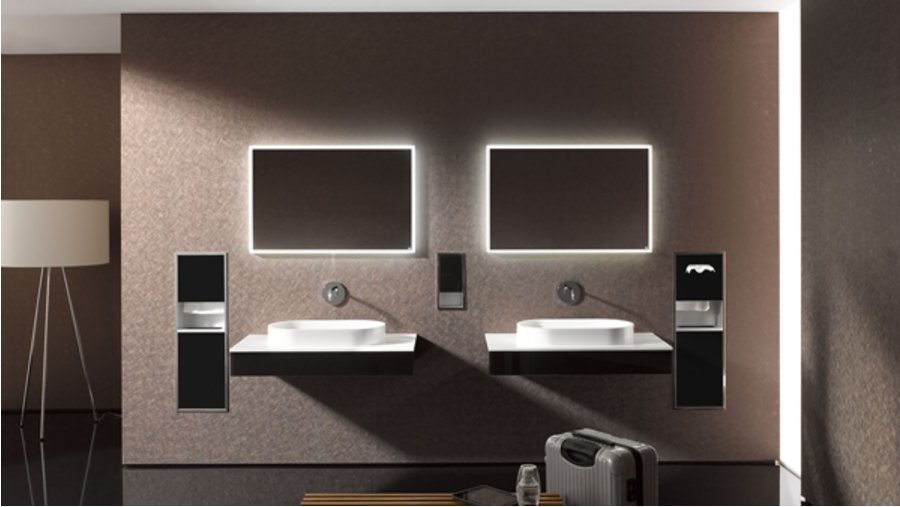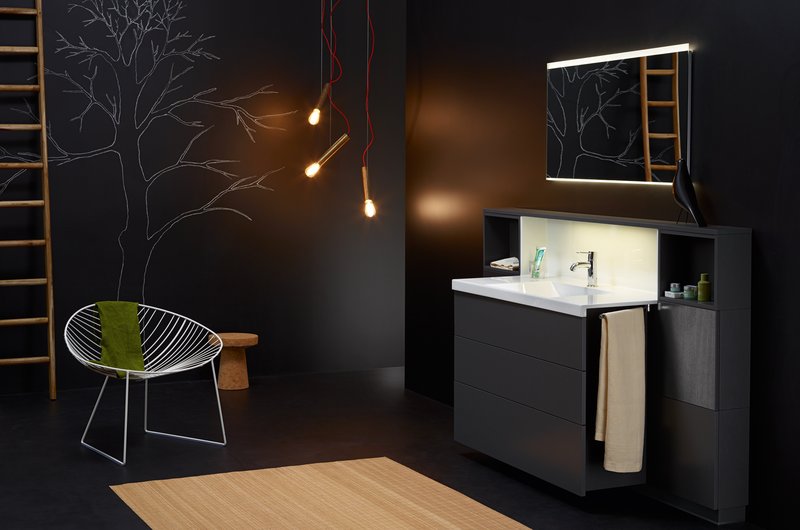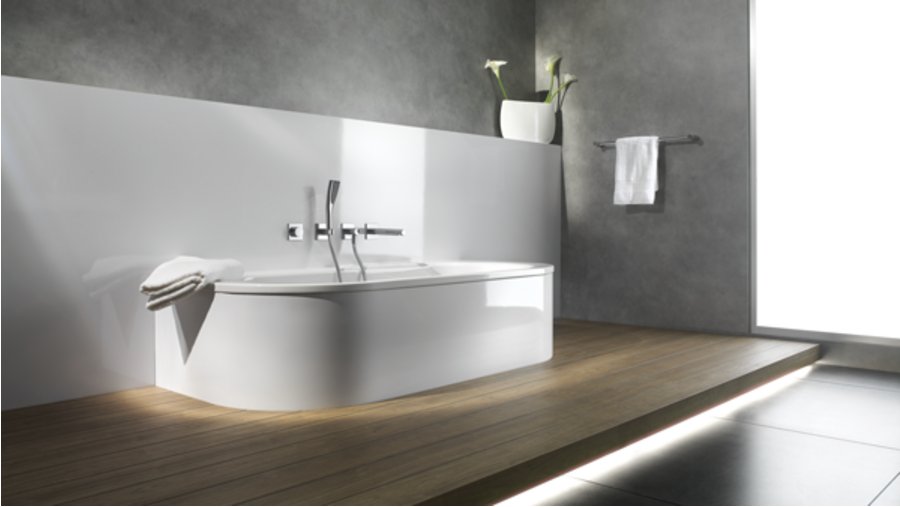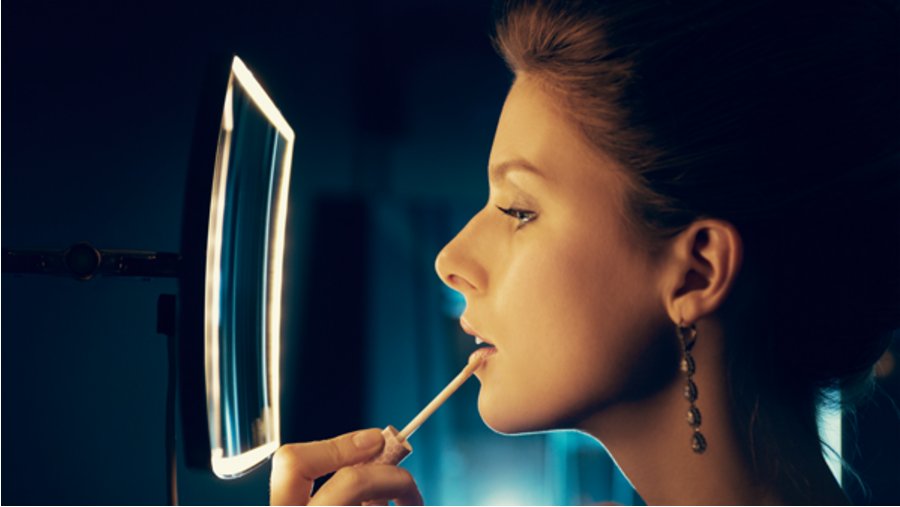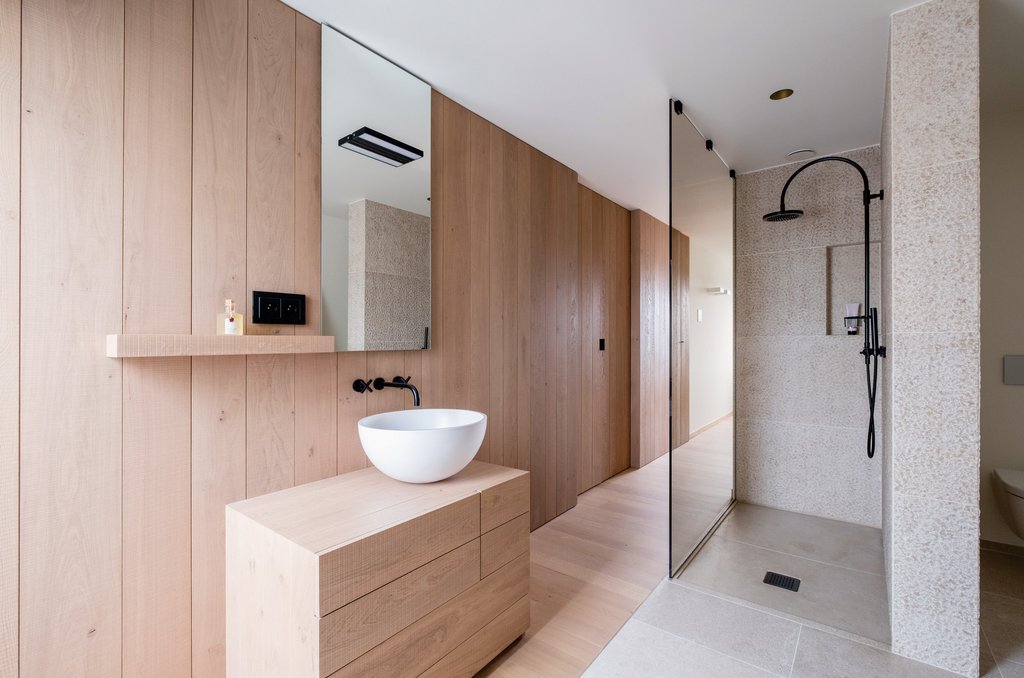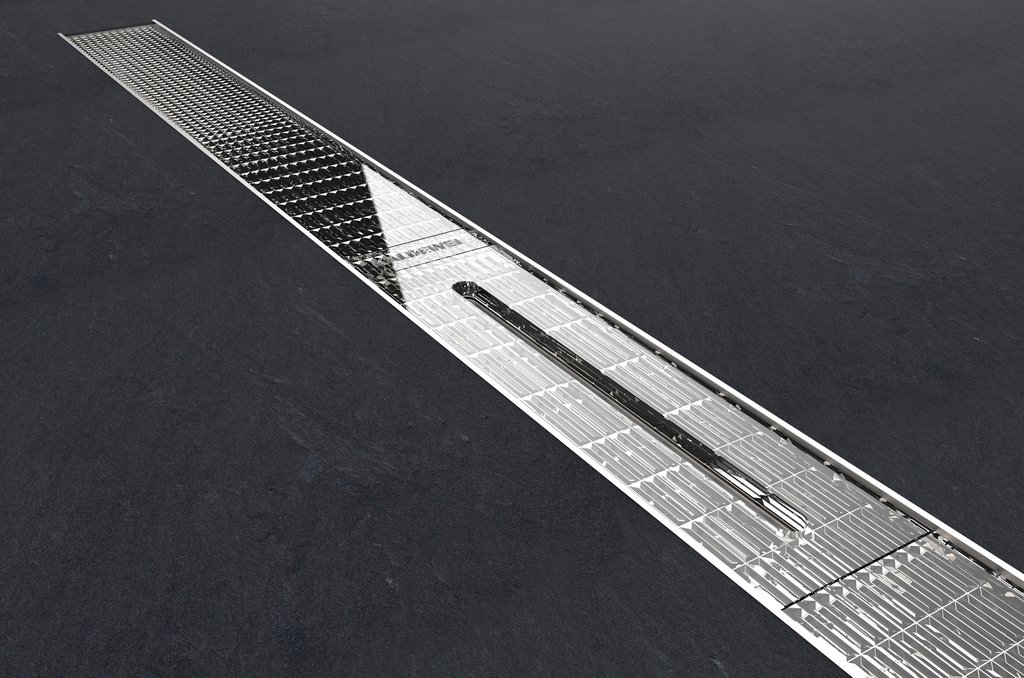Ambient lighting in the bathroom
In order to ensure optimal bathroom lighting, it is advisable to differentiate between ambient lighting, task lighting and accent lighting. Ambient lighting provides an even light for the entire space, allowing us to get our bearings quickly when we enter the room. Usually, a centrally mounted ceiling lamp is used for this purpose. For low-ceilinged rooms, surface-mounted luminaires are the most suitable choice, whereas bathrooms with high ceilings can benefit from pendant lights because their bright light penetrates even the lowest levels of the space.
One feasible alternative to the conventional ceiling lamp is to install several recessed spotlights, which can also be retrofitted by putting in a false ceiling. It is also possible to set up two separate circuits that can be operated and dimmed independently of one another.
Track and cable systems are another alternative for the general lighting in the bathroom. They are for instance an option for bathrooms with a narrow floor plan: the individual lamp heads permit optimal and separate illumination of the washbasin, bathtub and shower enclosure, as well as of the cabinets and shelves.
Finally, indirect lighting is also feasible in the bathroom, for instance by integrating RGB LED strip lights in false ceilings. Besides bright white light, they also provide more than one million other light colours, conjuring up atmospheric lighting to suit the individual user's tastes as he relaxes in the bathtub.
Optimal lighting for the bathroom mirror
When it comes to the bathroom, task lighting mainly refers to the zonal lighting of the bathroom mirror. One popular solution is to mount two identical wall lamps to the right and left of it. If the mirror is particularly large, a third lamp can be mounted above its centre.
Because the light sources are at eye-level, the lamps obviously need to be deglared. Lamps with satin-finish glass shades are therefore the most suitable choice. If mounted in the vicinity of the washbasin, they should also have a minimum safety rating of IPX4. This guarantees that the lamp casing is splash-proof. It is also important to ensure the right choice of light sources, because especially in this area of the bathroom it is important for the light sources to have very good colour rendering properties. At the end of the day, this is the prerequisite for being able to assess the condition of our skin and the quality of our make-up correctly.
Mood lighting in the bathroom
When it comes to accent lighting, it is crucial for at least one or two lamps to have a dimmer that allows the brightness and colour of the light to be infinitely adjusted – from very bright, brilliant-white light all the way to diffuse, warm-white light. At the same time, modern LEDs can of course be used to create a variety of interesting lighting scenarios too, such as a starry sky above the tub, individual points of light between the tiles or the colourful light provided by RGB LED strips applied to the back of cabinets, shelves or sideboards. The unusual design of certain decorative luminaires also makes them a good choice for creating some very special bathroom lighting scenarios.
Safety lighting at night
Going to the toilet during the night needn't necessarily mean having to switch the ceiling light on. Indirect lighting at foot level not only points out the way through a dark home, it also provides orientation in the bathroom itself. As a result, the user can avoid waking his or her partner and go back to sleep without being exposed to the disruption of bright light. Discreetly installed sensors can automate the process of dealing with this routine need and even make going to the toilet a fun experience.
Guest contribution by Daniela Schär
www.lightingdeluxe.de
Photo credits:
Background photo: burgbad
Photo 1: Emco
Photo 2: KWC
Photo 3: Keuco
